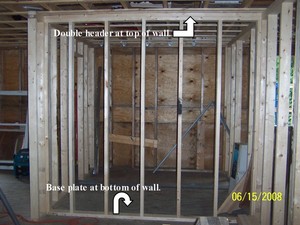A pocket door is the solution for the age old question “Where do we put the door?” A pocket door is exactly what its name implies: a pocketed door. In other words, the door slides between walls when not in use to create space. Typically these doors are used for bathroom privacy, closets and pantries, but are commonly used for passage doors as well and can also be used as double doors.
Pocket doors are installed prior to sheetrock or other wall coverings; typically during the framing stages of construction. Pocket doors can be easily added during remodeling, as long as the wall provides enough space and is free from wires, plumbing or isn’t bearing a load. With a wide variety of sizes, it’s easy to find the right size fit for your doorway, framed opening or opening to be.
When a pocket door comes from the factory, it is not assembled. A pocket door kit comes with an upper track, pocket frame and jamb. Prior to installation, remove the hardware bag and set it aside in a safe place, assemble the top track and frame pocket together, then test fit your opening. To assemble the pocket door, lay the pocket frame flat on its side. Place the track on its side on the top of the frame. You’ll see two slots for the upper frame to fit into and one slot on the back. Fit these three pieces of wood onto the track and attach from the top with 8d finish nails or 6d framing nail.
Your framed wall opening should have a pressure treated 1×4 for a bottom plate the length of the pocket frame bottom. This will ensure you can attach the pocket frame to the floor. The framed wall opening should be the width of the pocket frame with a 2×4 header jack against the back side of the pocket frame for nailing and support. The overall height of the framing opening should be 83″. The actual door opening should be the width of the pocket door itself. A basic header runs from door jamb to back of the pocket frame.
Insert the assembled pocket door frame into the framing opening. Have a helper hold the pocket frame in place as you use a level to determine the state of the pocket frame. Check for level on the door jamb and the upper track. Adjust the door as needed with wood shims.
Use 6d framing nails to attach the pocket door the back of the framing opening. Start from the bottom first and work your way to the top, inserting nails about every 12-16″ and 6″ from the top and bottom. Next insert a small roofing nail into the metal or plastic clip on the bottom of the floor through the 1×4. Finish off the pocket frame by attaching the upper track to the header. Don’t damage the track or obstruct it with nails.
Finish off the assembly by attaching the jamb to the other side of the door opening. Place the jamb against the stud and measure from the pocket jamb to the soon to be placed jamb, both top and bottom. Make the measurements the same with wood shims. When they are the same, attach the jamb to the stud with 8d finish nails. Rough framing is now complete.




